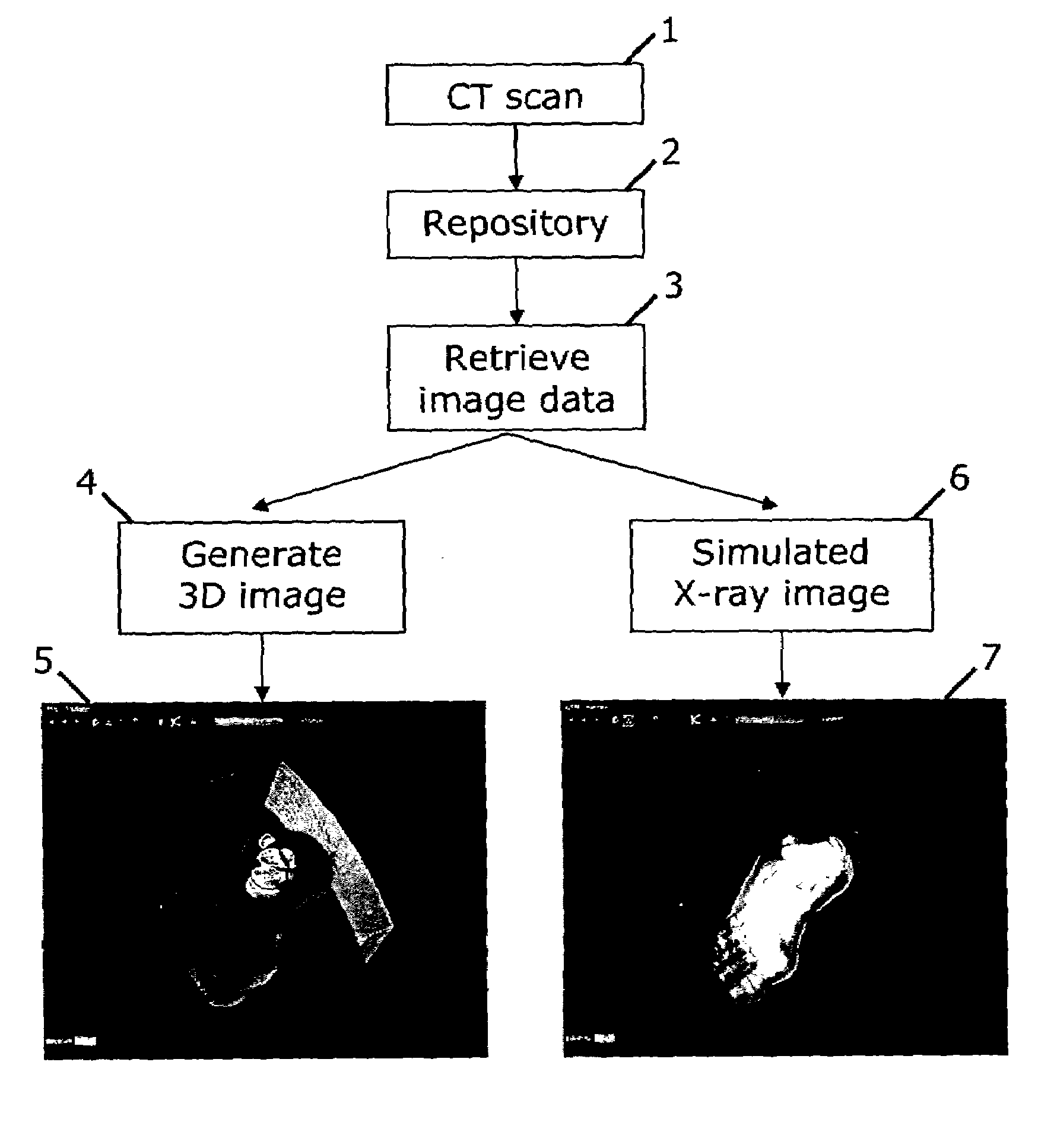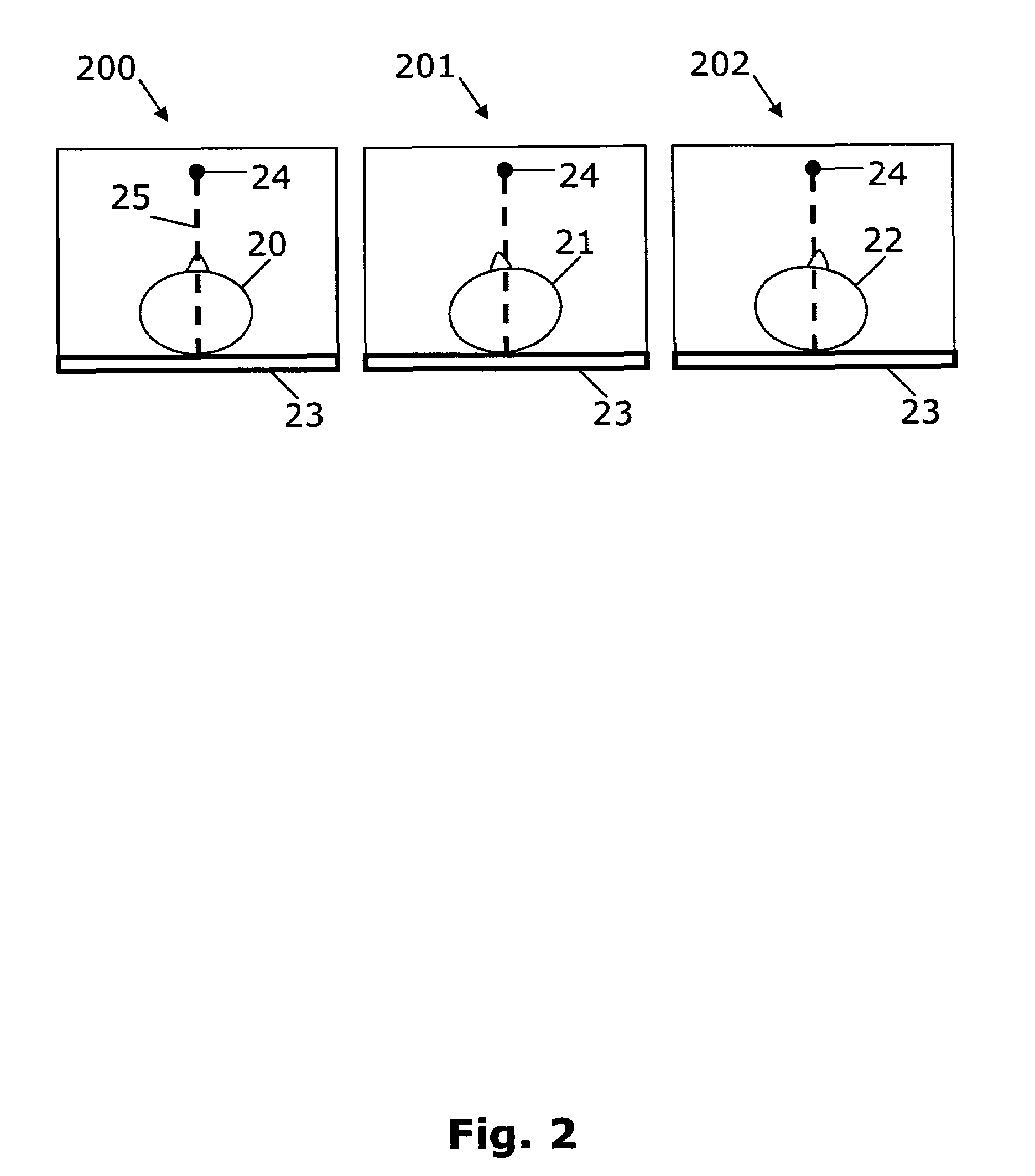Method and system for simulating X-ray images
a technology of x-ray images and simulation methods, applied in image data processing, diagnostics, applications, etc., can solve the problems of time-consuming, high cost of sending patients to an x-ray facility for obtaining x-ray images, and large slice images
- Summary
- Abstract
- Description
- Claims
- Application Information
AI Technical Summary
Benefits of technology
Problems solved by technology
Method used
Image
Examples
Embodiment Construction
[0007]It is an object of the present invention to facilitate access to 2D X-ray images of a patient under medical treatment who has undergone CT scanning. Accordingly there is provided, in a first aspect, a method of generating a simulated 2D X-ray image from CT data of a patient's anatomy, said method comprising the steps of:[0008]CT scanning the patient to generate corresponding CT data at a first time instance;[0009]storing the CT data in a data repository;[0010]retrieving the CT data at a second time instance after the first time instance;[0011]generating a 3D CT image of the anatomy from the CT data; and[0012]positioning a virtual X-ray source relative to a virtual image plane to generate the corresponding 2D simulated X-ray image, whereby the simulated X-ray image may be generated from an unrestricted viewpoint.
[0013]A patient is CT scanned and the data is stored in a data repository. The repository of patient CT data may be accessible to a user through a computer network. For...
PUM
| Property | Measurement | Unit |
|---|---|---|
| CT | aaaaa | aaaaa |
| opacity | aaaaa | aaaaa |
| Computed Tomography | aaaaa | aaaaa |
Abstract
Description
Claims
Application Information
 Login to View More
Login to View More - R&D
- Intellectual Property
- Life Sciences
- Materials
- Tech Scout
- Unparalleled Data Quality
- Higher Quality Content
- 60% Fewer Hallucinations
Browse by: Latest US Patents, China's latest patents, Technical Efficacy Thesaurus, Application Domain, Technology Topic, Popular Technical Reports.
© 2025 PatSnap. All rights reserved.Legal|Privacy policy|Modern Slavery Act Transparency Statement|Sitemap|About US| Contact US: help@patsnap.com



